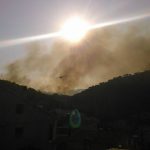June 15, 2018 — Think Dalmatia’s full of spotted dogs and leathery-skinned fishermen? Well, say hello to the poskok, or horned viper.
While most visitors marvel at Croatia’s coast, summer for locals induces one unshakeable fear: “Poskok” season, when one of Europe’s most dangerous snakes slithers out of rocky lairs, threatening to bite unsuspecting victims and passersby.
Its most recent victim: a woman cleaning a grave in Gračac on Tuesday, saved, thankfully, in Gospić’s general hospital.
The horned viper, known locally as the “poskok”, induces a low-grade panic every year as newspapers decry a lack of anti-venom while chronicling nearly every bite. For good reason: the poskok has a impressively awful reputation.
Before you develop an Indiana Jones-like fear of snakes, remember prevention trumps even the best care.
The Croatian Institute for Public Health has the following suggestions for how to keep yourself out of harm’s way:
- If you see a snake, leave the damn thing alone! Most bites occur when dolts try to catch the snake or shoo it away. Instead, keep a safe distance from not just the horned viper but any snake, all while giving it the finger and sticking your tongue out.
- Stay out of tall grass, especially areas where you cannot see the ground. If you must walk through grassy area, ditch your usual footwear (Crocs) and don some thick leather boots.
- Don’t stick your arms or legs into dark, cavernous spaces where you cannot see inside — no matter how much treasure you think a pirate may have buried in there. Don’t go around flipping over rocks and pieces of wood either, unless you have a death wish.
- Pay careful attention when rock climbing and hiking.
The poskok, *Vipera ammodytes*, owes its reputation to sheer numbers: known for its large size (up to a meter long); large fangs (up to 13 mm) and a highly toxic venom. The snake earned its name via the distinctive horn on the end of its snout, and can also be recognized by the diamond, or zig-zag pattern running down its back.
The “poskok” has a mythological status among Dalmatians, especially in the slithering nightmare’s preferred habitat. Though it’s often referred to as the “sand viper”, it’s rarely found in sandy areas, preferring instead rocky terrain and the edges of woodlands and vineyards, much like the more arid bits of Dalmatia and its hinterlands.
Perhaps unsurprisingly, the poskok suffers from its own reptilian variant of fjaka, and is lazy by nature. Though it may have a nasty reputation, the species isn’t particularly aggressive. When scared, the snake is often as likely to simply hiss or run away as it is to bite.
But if it does bite, the viper injects a poisonous cocktail that is proteolytic, neurotoxic and hemotoxic. In other words, the venom attacks your blood, nerves and muscles at the same time, essentially incapacitating the victim with unusually sharp pain, shock, sometimes dizziness and nausea. Some of the more immediate symptoms include pain, swelling and discoloration around the bite area.
But a bite does not always spell doom. Outcomes depend on how much venom is injected into the bloodstream, as well as the size and health of the victim.
In the case of a suspected bite, the Croatian Institute for Public Health recommends the following steps:
- The victim should keep as still as possible, especially avoiding movement involving the bitten area; flailing your arms and legs in sheer panic makes matters worse.
- A tight, but not too-tight, tourniquet should be place between five and 10 cm away from the bite towards the heart, to slow circulation of the venom throughout the body. Don’t tie too tightly, you’ll risk cutting off all circulation.
- Most importantly: get to a hospital immediately, you fool!









